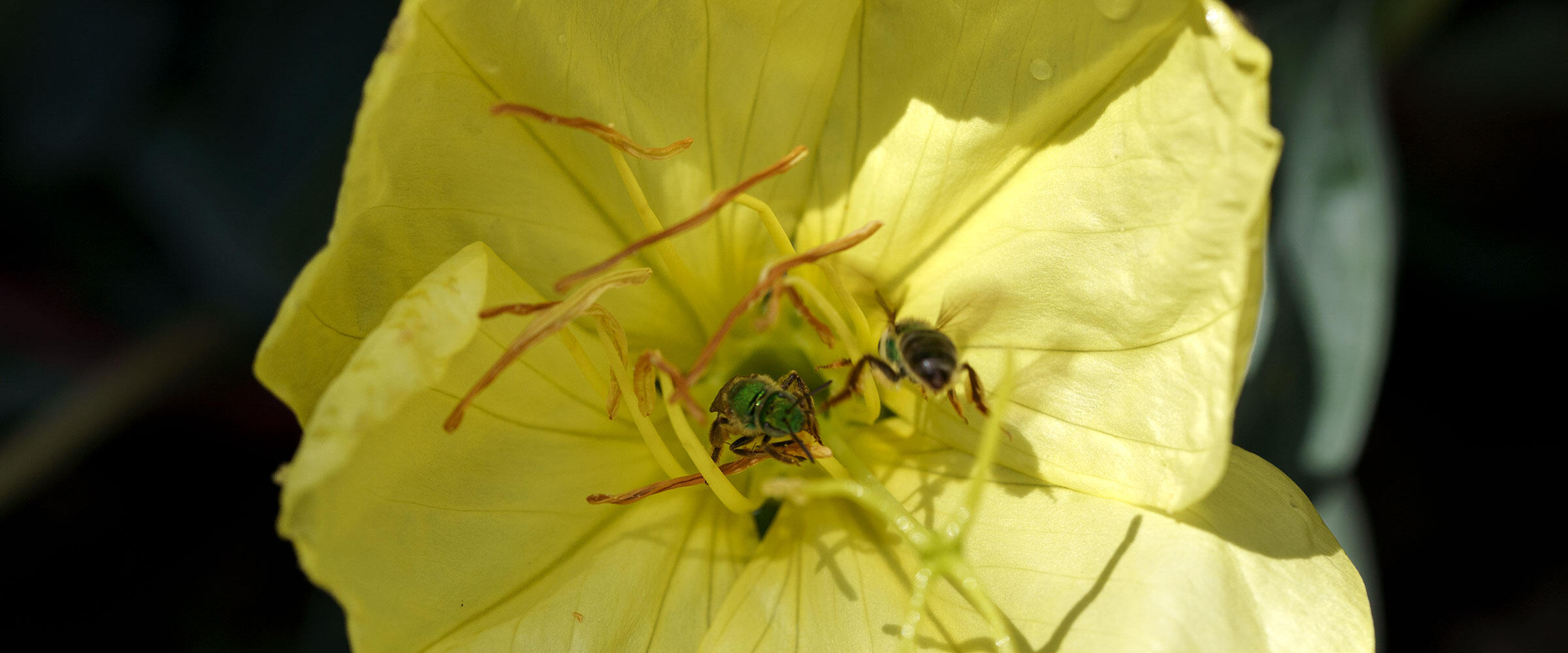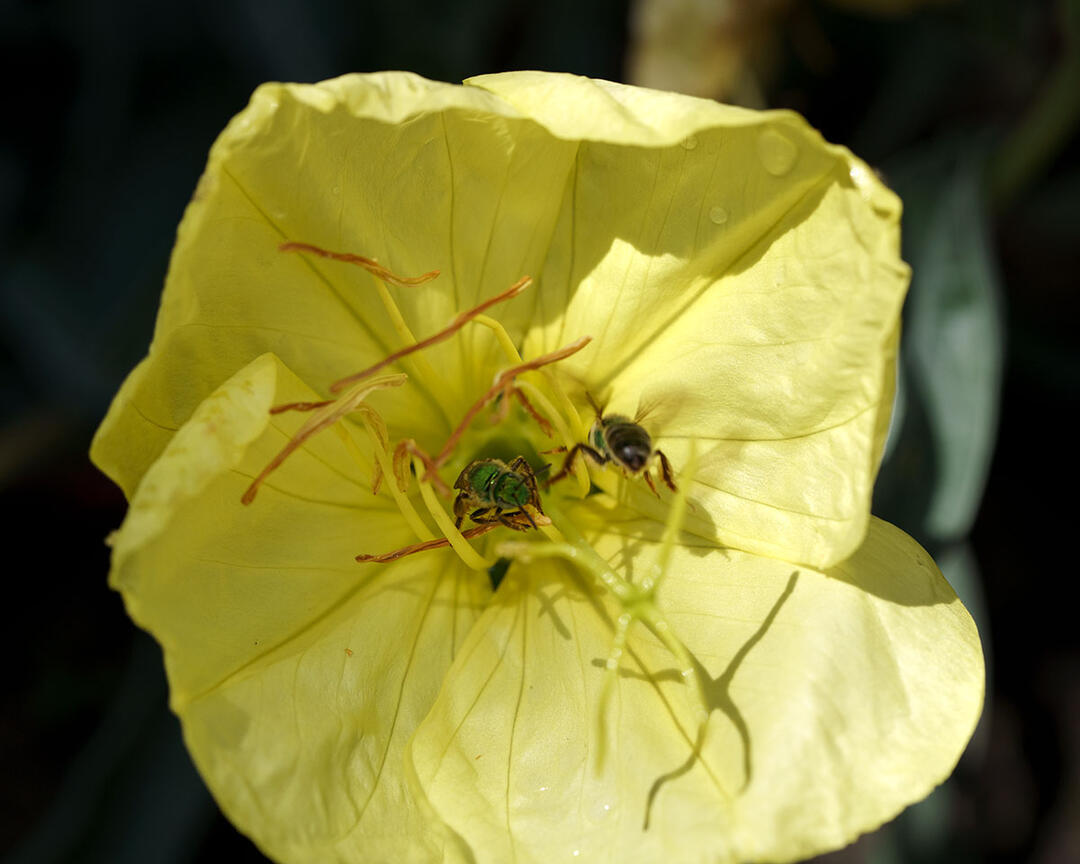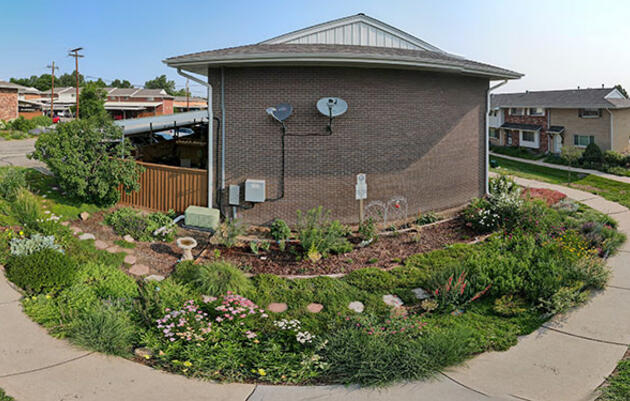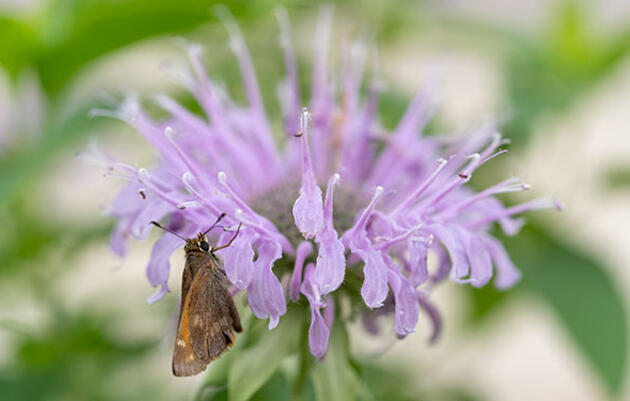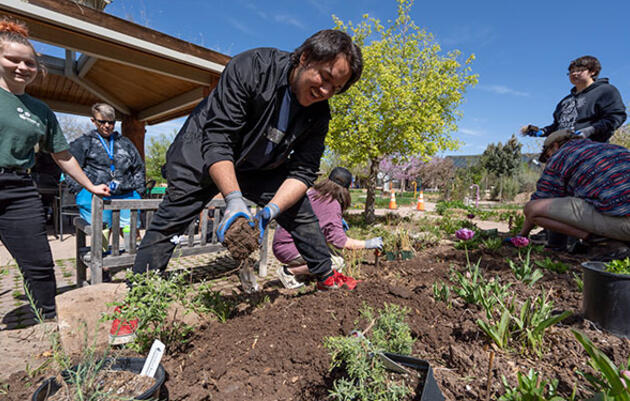Pitching a Neighborhood Transformation
The yards on my block, near the University of Denver, are like most in the city: 90 percent non-native grass. Over the years I’ve been adding native plants, and last year I asked my neighbors to start doing the same.
My goal was to get Habitat Hero certification for the block. What did we have to start with? Fortunately, all of the yards already had some bushes, so the certification requirement of a mixture of flowers, shrubs, and trees was already met. To get certified, we had to add native plants and get commitments to keep cats inside.
Before I had even formulated my plan, I had my neighbors over for a winter solstice party, just so everyone could meet. Although I’ve lived in this house for thirty years, I didn’t know all my neighbors. What’s more, because of COVID, my interactions with neighbors I have known for years had been minimal.
I was so gratified by the response to my invitation. Many of my neighbors really seemed ready to get together.
Next, I started trying to sell the idea of native plant gardening for wildlife. I approached my neighbors individually, knocking at each of the other doors and pitching my idea. Everyone was on board with the idea of attracting birds and butterflies.
I followed up with two more events, one hosted by Kaladi Coffee at their shop on Evans. The first, in April, was a talk by Kate Hogan of Denver Audubon focused on planting for wildlife. At the second, entomologist Mike Weissman focused on planting for birds and moths. At both events, the many questions made me feel that my neighbors were really engaged. Everyone asked very different kinds of questions, approaching the project with different goals and concerns.
Putting Plants in the Ground
As fall approached, I chose plants to share with each of my neighbors. Sunlight and existing watering were important considerations, but I also wanted to make this a rewarding project. So I made sure to include plants with great flowers that were easy to care for and were likely to attract some of the more showy pollinators.
I included tufted evening primrose, a milkweed, and some yarrow. These are all easy to grow, beneficial to wildlife, and require little water. I think any of the evening primroses are great because they are guaranteed to attract night flyers, which makes them really rewarding.
Other plants I included were gaillardia, Maximilian sunflowers, penstemons, little bluestem, and white sagebrush. Some were gifts from friends, but I picked up quite a few at the Wild Ones Front Range plant swap held in June. I also transplanted quite a few from my own garden.
The actual planting took place in a piecemeal fashion. For most of the yards, I dropped off plants to be added to existing beds. We held a workday, but it was not well attended, probably because not enough notice was given. At it, we created a small bed in one yard that was otherwise taken over by weeds and added some natives to another neighbor’s beds. Six months later, the plants are still tiny, so patience is required. The result is far from stunning, but there’s a lot more food and habitat for the creatures we hope to attract. I think we’re moving in the right direction.
Hopes and Plans
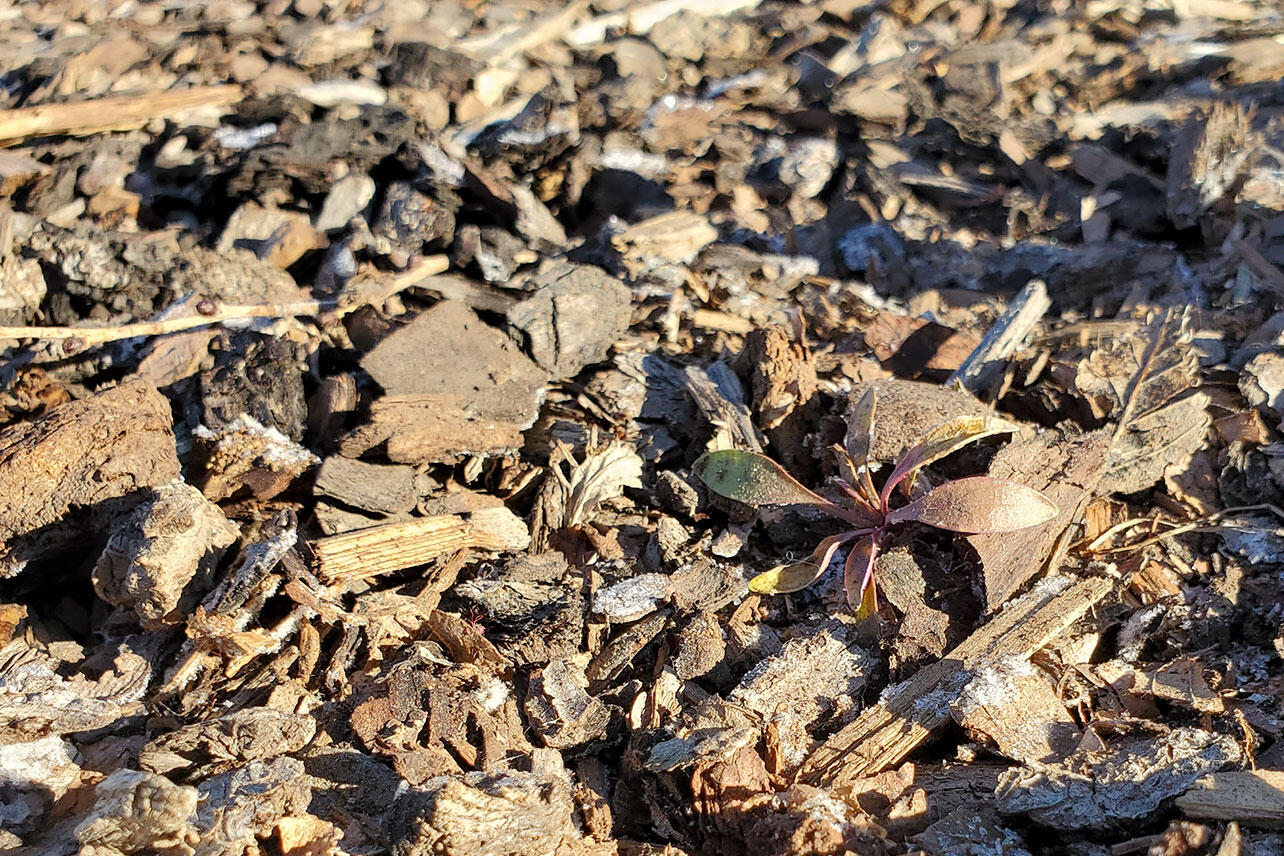
I had such great conversations with my neighbors last summer about the hummingbirds we saw. When our evening primroses bloom this year, I hope we’ll get to chat about hawkmoths and other night pollinators. My goals for this year are to have a better-attended planting day in May and to include our neighbors across the street.
I also want to choose two to three plants to put in en-masse at every house. That will have the benefit of creating a less fragmented habitat for birds and pollinators. More continuity would be a lot better for nectaring butterflies and add more visual unity. Also, if I create one-page fact sheets for each, including the wildlife that neighbors should look out for, it will add to the interest and understanding.
Last, I want to rent a sod cutter to take out some areas of lawn to extend the beds. I’m hoping to get one of the large home improvement stores to sponsor our efforts.
If You Try This Yourself…
I made a lot of mistakes. If I did this again—for instance on the other side of the block—I would come up with a single garden plan for neighbors to install. It would be a lot easier to pitch and potentially better for wildlife to have a consistent little corridor to use. I would also round up some workers and plan well in advance so we could have one big planning day.
Bringing in the local coffee shop was great for a number of reasons. Kaladi donated coffee to our workday. Bringing neighbors, a local business, and a planting project together seemed like a win for everyone. Kaladi has since paid for a native planting in front of their shop on Evans.
Although fall is a great time to plant here, spring is simply better for most of us. By August, when my planting project really got going, people had invested time and money on their yards and simply weren’t thinking of new projects. In January 2023, I started planning a second attempt, with the goal of planting in May.
Selling wildscaping to an HOA is challenging, but once you’ve sold the idea you can start planting. Approaching the idea house by house is more time-consuming and fraught with more challenges.
First, renters usually have limited options and of course are not always willing to sink money into properties they don’t own. Second, the American approach to landscaping—besides focusing on lawns and Eurasian plants–is that a yard is very much each person’s domain. Cooperation is not a concept we’re familiar with when it comes to landscaping. Third, there is a steep learning curve concerning the upkeep of a different kind of landscape. These are not great times to ask people to substantially change how they do things.
Traditional landscaping is familiar and supported by all kinds of institutions and habits: retailers, landscaping professionals, and cities. Caring for natives may be easier, but it’s foreign to most of us. Practices such as leaving seedheads and other vegetation are also a novelty for a lot of people.
Similarly, traditional styles of landscaping are familiar and aesthetically “right” to a lot of people. Anything else is foreign, potentially time-consuming and expensive, strange looking, or even messy. With so few examples of alternative lawns out, it’s hard to envision a different aesthetic.
When people agree to change how they garden, many different motives are at work. Attracting wildlife is a big one.
An unexpected benefit of this effort is that I feel like our block is a better place to live, even before we’ve made any real native planting inroads. I know all of my neighbors now and I feel much more connected than I have in a long time.
Want to take on a project like Pam's? Our friends at High Country Gardens have put together a plant list from Pam’s neighborhood planting to help you get started.

